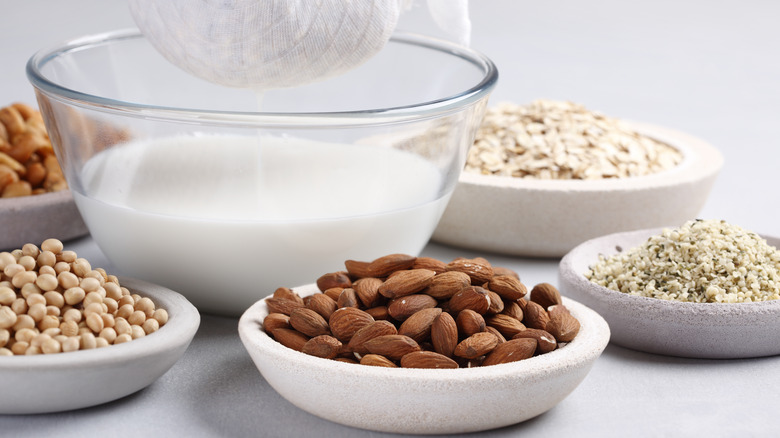The Last Thing To Do Before Throwing Out Homemade Almond Milk Pulp
Homemade almond milk production often leaves many wondering what to do with the leftover almond milk pulp. Some common solutions include discarding, composting, or turning it into bird feed or squirrel food. But for culinary enthusiasts, especially those who love to bake, the last thing to do before discarding this almond byproduct is to transform it into a versatile baking ingredient—homemade almond flour.
Almond flour, a nutrient-rich, gluten-free, and vegan-friendly ingredient, is highly versatile in the kitchen. Its subtly nutty flavor and desirable texture can enhance an array of baked goods, including cookies, cakes, and macarons. Furthermore, almond flour has a low glycemic index, making it an attractive alternative for those managing low-carb diets or diabetes, according to Healthline.
Beyond its nutritional value, turning almond milk pulp into almond flour may be a fiscally smart choice, as store-bought almond flour tends to be pricey. So let's delve into the surprisingly simple process of converting your almond milk pulp into homemade almond flour, a secret baking ingredient waiting to be harnessed.
Turn almond milk pulp into versatile homemade almond flour for baking
After making homemade almond milk, gather the strained pulp and spread it evenly over a parchment-lined baking sheet. Preheat your oven to a low temperature, around 200 to 250 degrees Fahrenheit to slowly dehydrate the pulp without burning it. Keep on an eye on it because, depending on the pulp's moisture level, this process can take at least two to three hours. Once thoroughly dried, the pulp can be ground into flour using a mortar and pestle, blender, or food processor. The end product should be a light and fluffy flour. Feel free to sift it before storing it in an airtight container for future use.
In terms of baking, this homemade almond flour can be used instead of wheat flour in many recipes. Imagine gluten-free almond crinkle cookies with a delicate crumb, pretty French macarons, or a luscious chocolate flourless cake made with almond flour. For the adventurous, you can even try using homemade almond flour to make a crunchier pizza crust.
So, the next time you have leftover almond milk pulp, consider its potential. Turning it into almond flour lets you get the most out of your homemade almond milk while elevating your baking game.

